
A key component of any touring 4x4 build is a suspension upgrade.
Some might ask why this is necessary when the OEM engineers have spent countless man-hours and millions of dollars developing the suspension for the vehicle, so why would you ever need to replace it?
The answer is simple. Like most everything on a production car, the suspension is a compromise. It has to meet acceptable standards for body control, handling, ride quality and load carrying ability, all while meeting a cost per unit to meet the manufacturer’s targets.
They are built to a price and that price is the lowest possible one while achieving the desired performance. Some manufacturers invest more in the suspension of their vehicles than others do and it shows when you drive them.
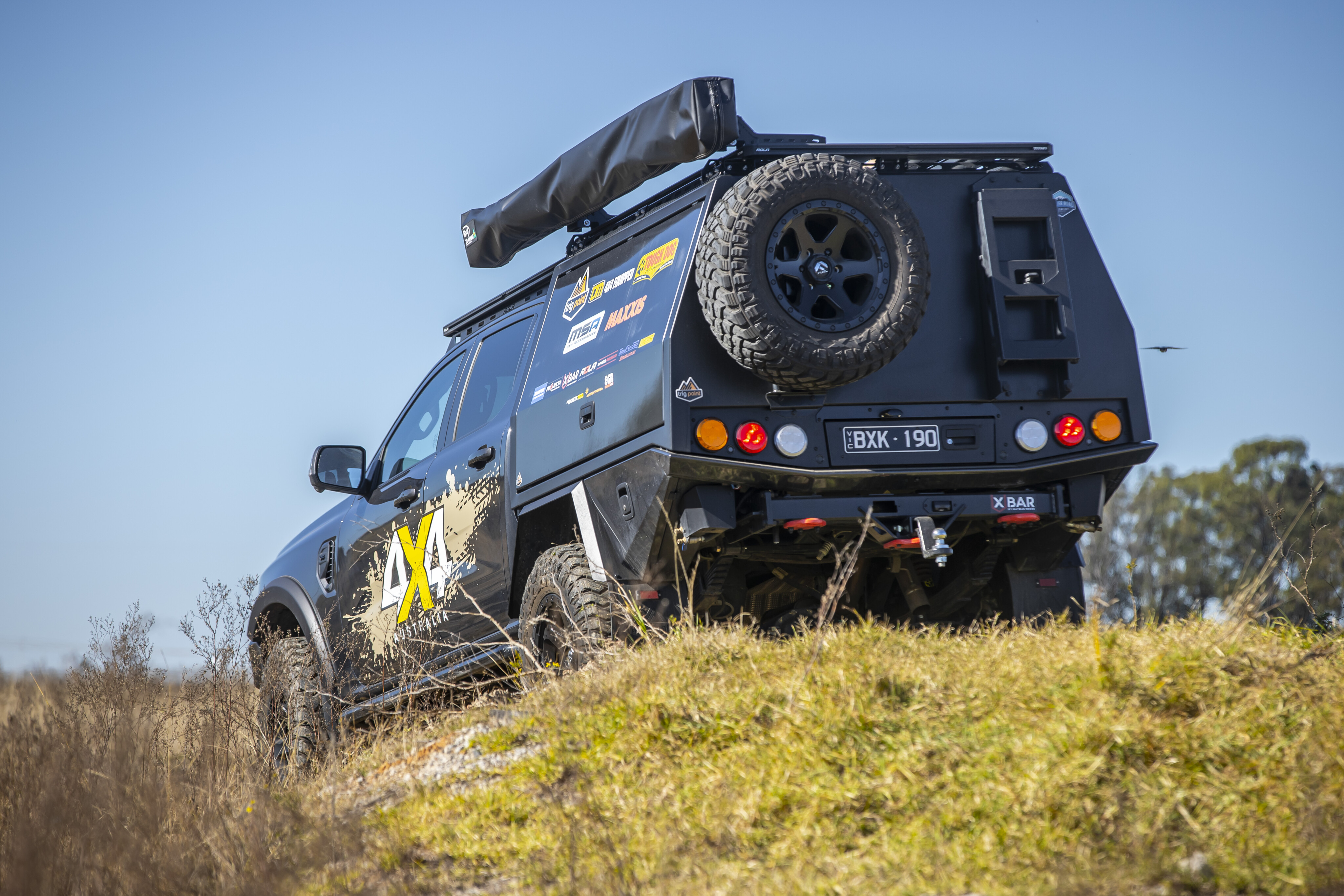
This compromise is amplified in a double-cab 4x4 ute as these vehicles are the biggest compromise themselves.
They are marketed to be family vehicles that are capable off-road, able to carry a one-tonne payload, pull a 3500kg trailer, and be a great all-round touring vehicle. In reality, they don’t do any of those things particularly well. Sure, they do an acceptable job, but rarely do they do a good one.
Take the current Ford Ranger for example. Its chassis and suspension deliver ride and handling that are best in class, but start to load it up with weight on the back and the rear springs sag terribly, and it doesn’t take much to have it riding on the bump stops.

So if you want to tow or carry a load in your ute you will want to upgrade the rear suspension at the very least. You might even want to fit a suspension kit that increases the GVM of the vehicle to allow for heavier loads.
If you are fitting a lot of heavy accessories like steel bullbar, side rails, winch, canopy, rooftop tent and so on, you’ll also want to upgrade the suspension and might want to consider a GVM upgrade.
If you want to use your ute for off-roading then you’ll want to raise the ride height to give more ground clearance, and maybe some added tyre clearance. You’ll want heavier springs to carry the loads required of a touring 4x4, and better quality shock absorbers to control those springs and manage the rough terrain you will experience when driving off road.
It’s all about dialling-in the vehicle to best suit your requirements to give you a safe, competent and reliable rig for the type of use you need it for.

Getting it right
There are countless companies out there with ready-made suspension packages they are only too willing to sell you for your 4x4 but, just as you tailor the vehicle to your own specific needs, you need to tailor the suspension to the vehicle and its use.
The biggest factor here is vehicle weight, followed by how you plan to use it, so rather than simply buying an off-the shelf or online suspension package, you should speak to the suspension manufacturer/supplier to discuss your needs and planned use in detail so you can tailor a package that will best suit your application.
As mentioned, the RA Ranger comes with the best off-the-lot suspension for general driving in the class, but we knew that as we loaded our Ranger up with equipment, it wouldn’t cope for long. And we were surprised at how soon it fell short of being acceptable!

To get the right suspension for your 4x4 you need to know how much weight you’ll be adding to it.
Having a definitive list of all those added products and what they weigh is a good start but ideally you want to set the vehicle up at full touring weight, with all the accessories already fitted.
As with our last two 4x4 builds we again turned to the team at Tough Dog Suspension for the kit to go under our Ranger. We discussed with them what we wanted for the vehicle and what was going on it, and planned to leave the suspension installation until the latest possible moment when most of the gear would already be fitted, allowing us to dial it all in.
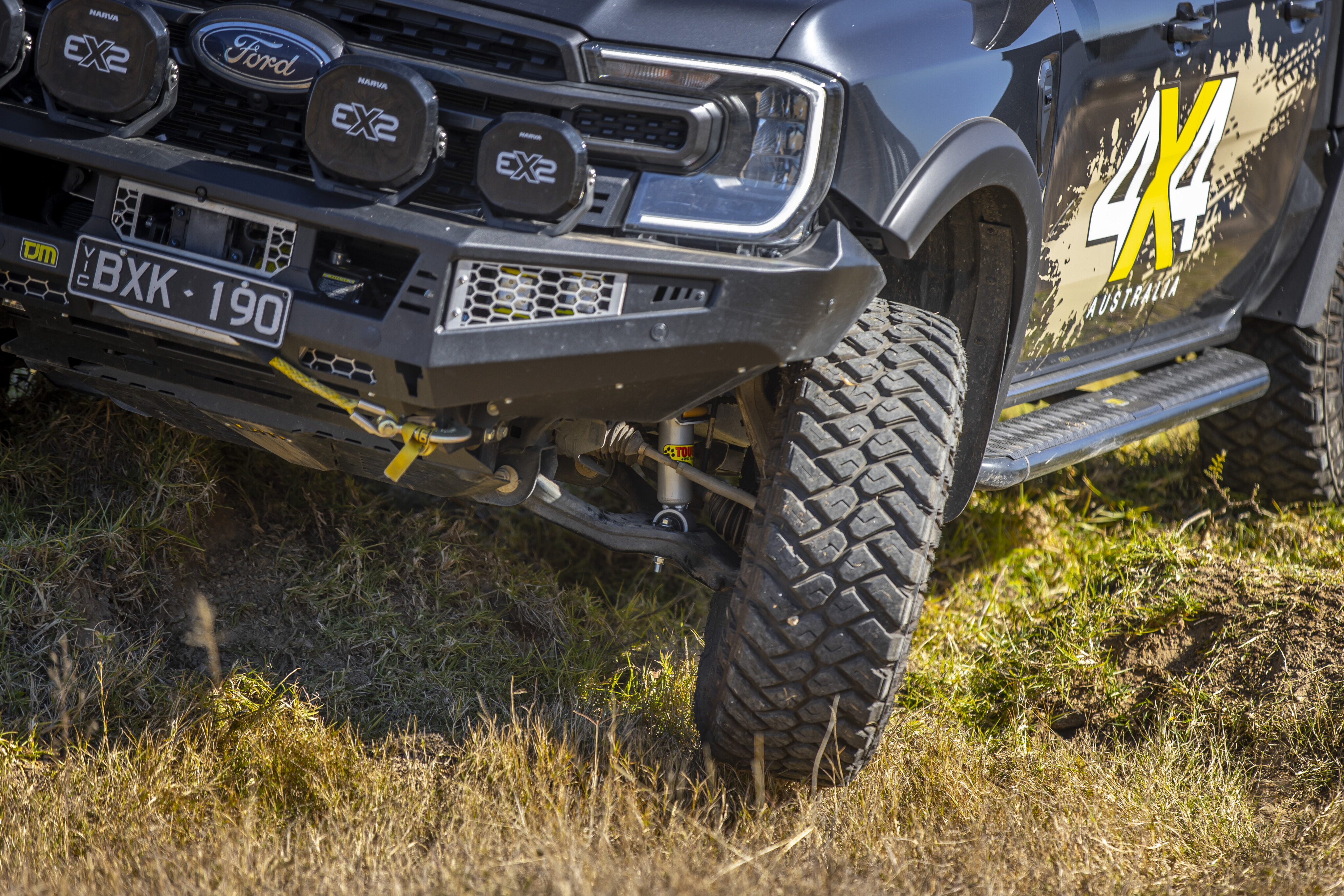
Our 285/70R17 Maxxis tyres on Fuel Ripper zero-offset wheels fitted the on the vehicle without requiring any suspension changes, so we were able to run them right from the outset.
The TJM Venturer front bar, Torq winch and side steps added a noticeable weight to the front-end, but with no detrimental effects on the way the car drove. It wasn’t until we removed the standard cargo tub and fitted the Trig Point canopy that we really started to see and feel the OE suspension struggling.
Removing the steel cargo tub and fitting the aluminium canopy/service body only adds around 230kg or so, but the longer body does move the weight of the vehicle further back behind the rear axle, especially with the spare wheel mounted right at the back.
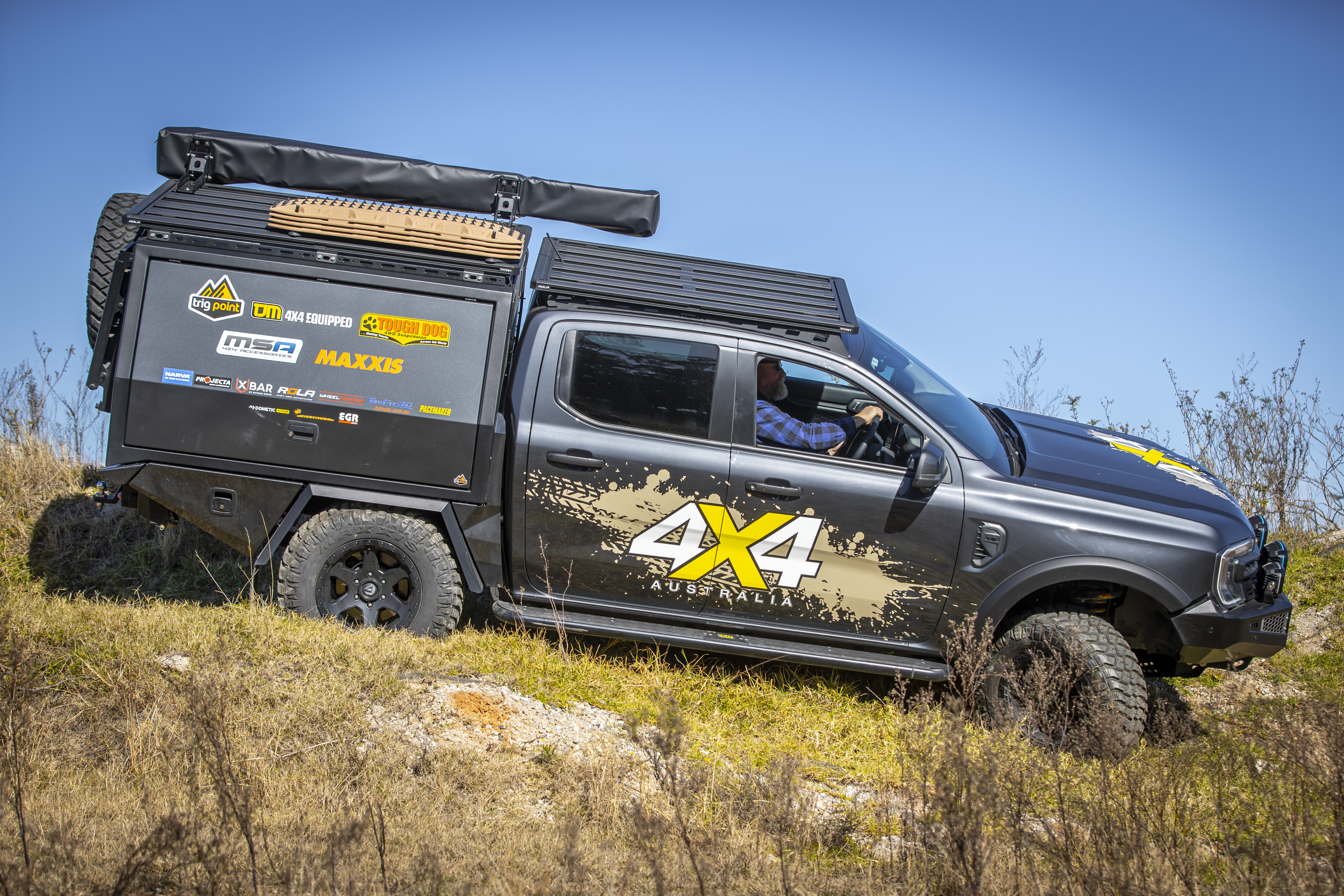
This again was noticeable when driving but still acceptable. It wasn’t until we started loading the canopy up with the Projecta 12-volt power system, and the MSA Powerslide with the Dometic fridge, that things started to turn south.
The rear-end sagged so much that the suspension was bottoming out over suburban speed bumps and the springs were only millimetres off the bump stops. This is something we also heard from folks who were buying their Rangers to tow 3000kg trailers with, and they were having to update their suspension.
The team at Tough Dog was still working on its suspension systems for the new Ranger and we still had more gear to fit before we planned to take it to Sydney for the final installation, so as a stop-gap fix, Tough Dog sent us a set of 500kg constant-load rear springs to get the back-end back up, and tide us over till we headed up north for the full kit.
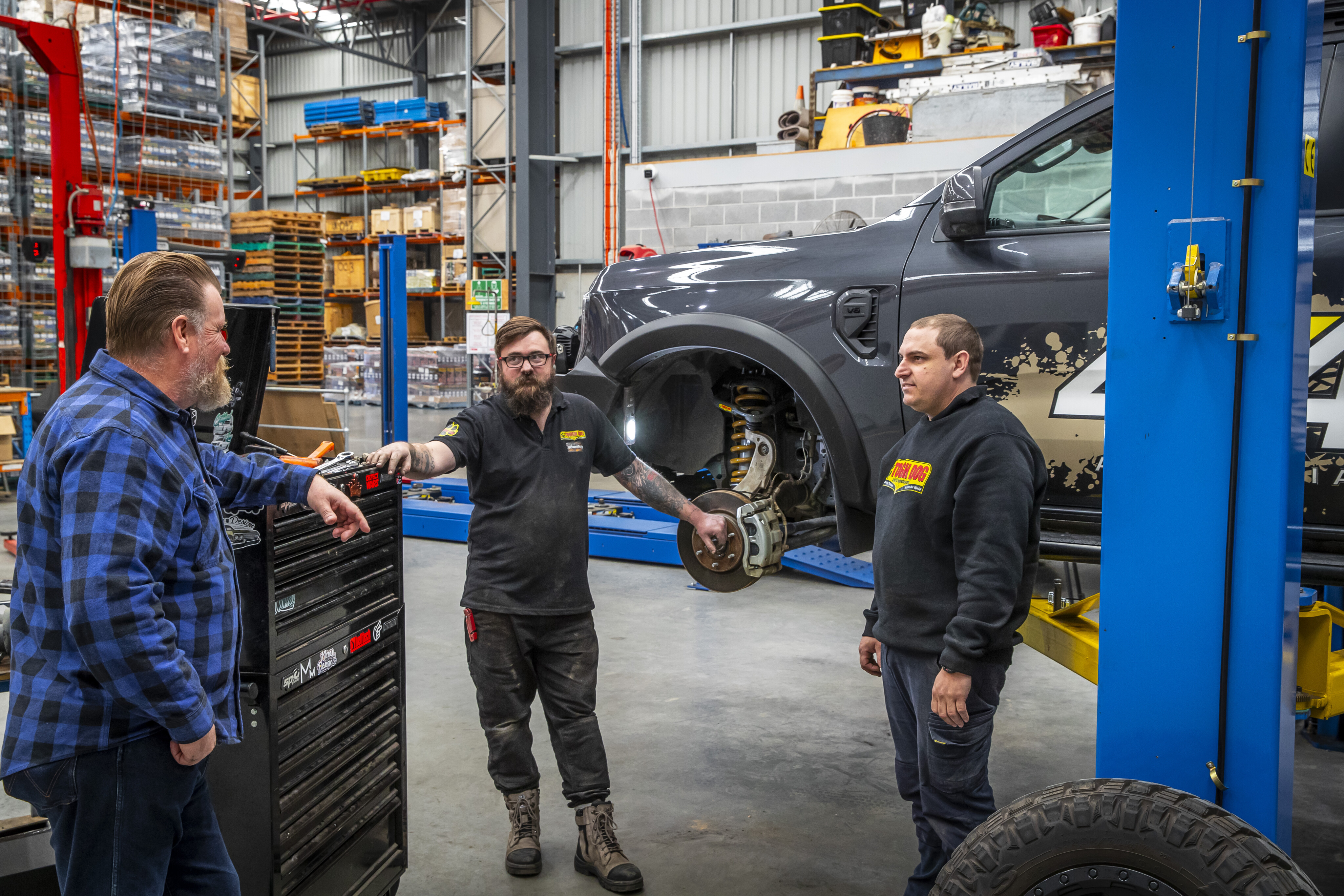
The leaf springs were selected in line with the weight we had already fitted to the vehicle, as well as what we had planned.
The 500kg springs had the Ranger looking like a 70s street machine with the rear-end raised and the nose down, but at least it was driveable again. With our Narva lights, Rola Racks, Boss Aluminium awning and a few other goodies fitted, we figured we were getting closer to our target, so we hit the Hume and headed north for the trip to Tough Dog HQ.
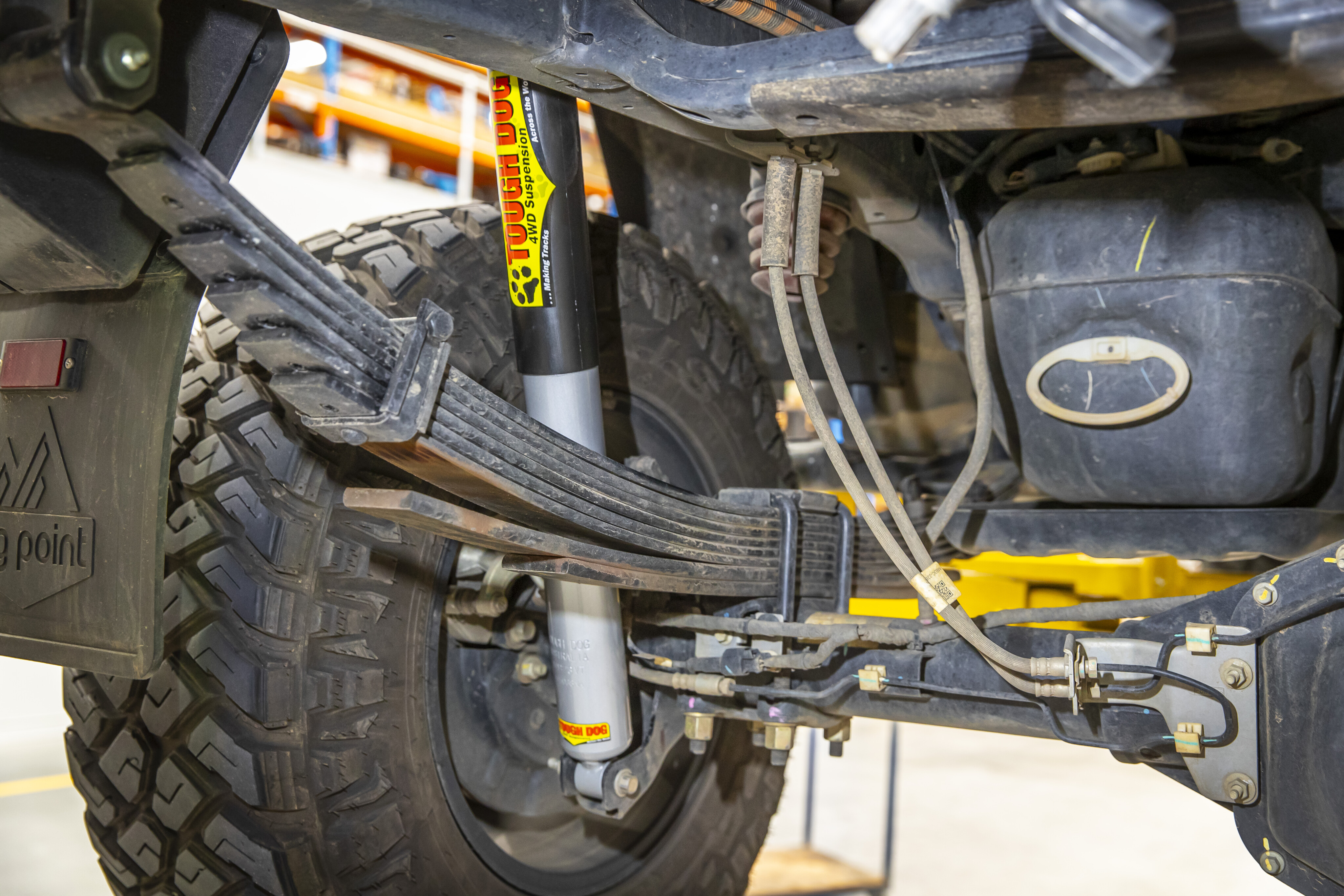
Fitting time
On arrival at Tough Dog’s huge facility in Marsden Park, the team was ready to install a set of front struts they had already built using the information we had supplied earlier.
Specifically, they were designed for a vehicle running a steel bullbar and winch, which of course we had. The fully assembled struts include the dust boot and bump stop along with the strut top mounting and bushings.
The struts are fitted with Tough Dog’s Foam Cell 40mm bore shock absorbers. The Foam Cell shocks are a twin-tube design and have a foam insert inside them that helps manage the oil flow to reduce shock fade from sustained corrugations and rough roads.
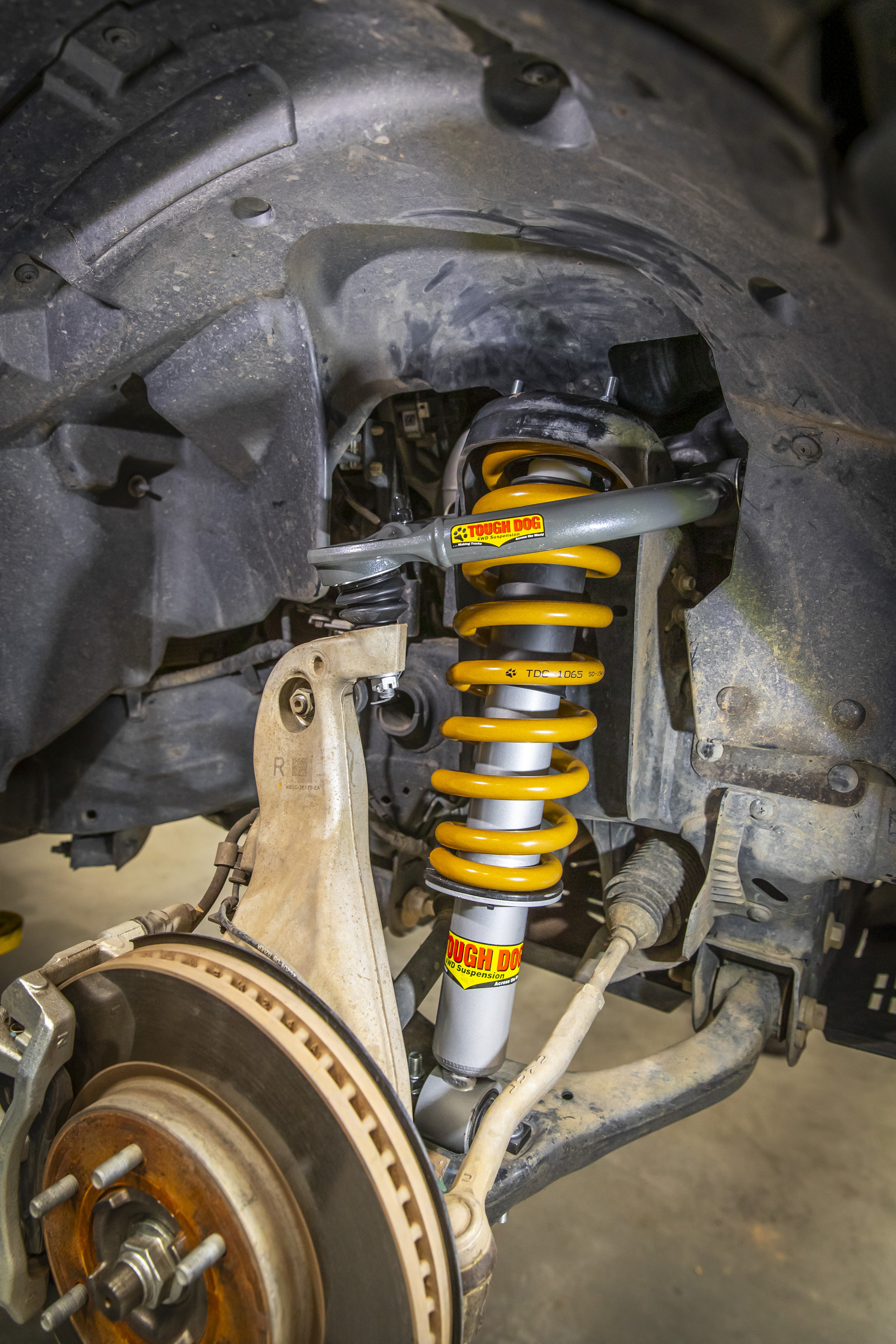
They also employ velocity-sensitive valving so they best react to high- or low-speed frequency bumps.
They are a great value for money, all-round performance shock absorber, and our previous experience with the foam cells meant we were happy to be using them again.
The Tough Dog struts were installed along with replacement upper control arms. The latter are not only tougher and stiffer than the OE arms but more importantly allow the suspension geometry to be adjusted back to the factory specifications after installation of the taller struts. The new struts raised the front ride height by around 50mm.
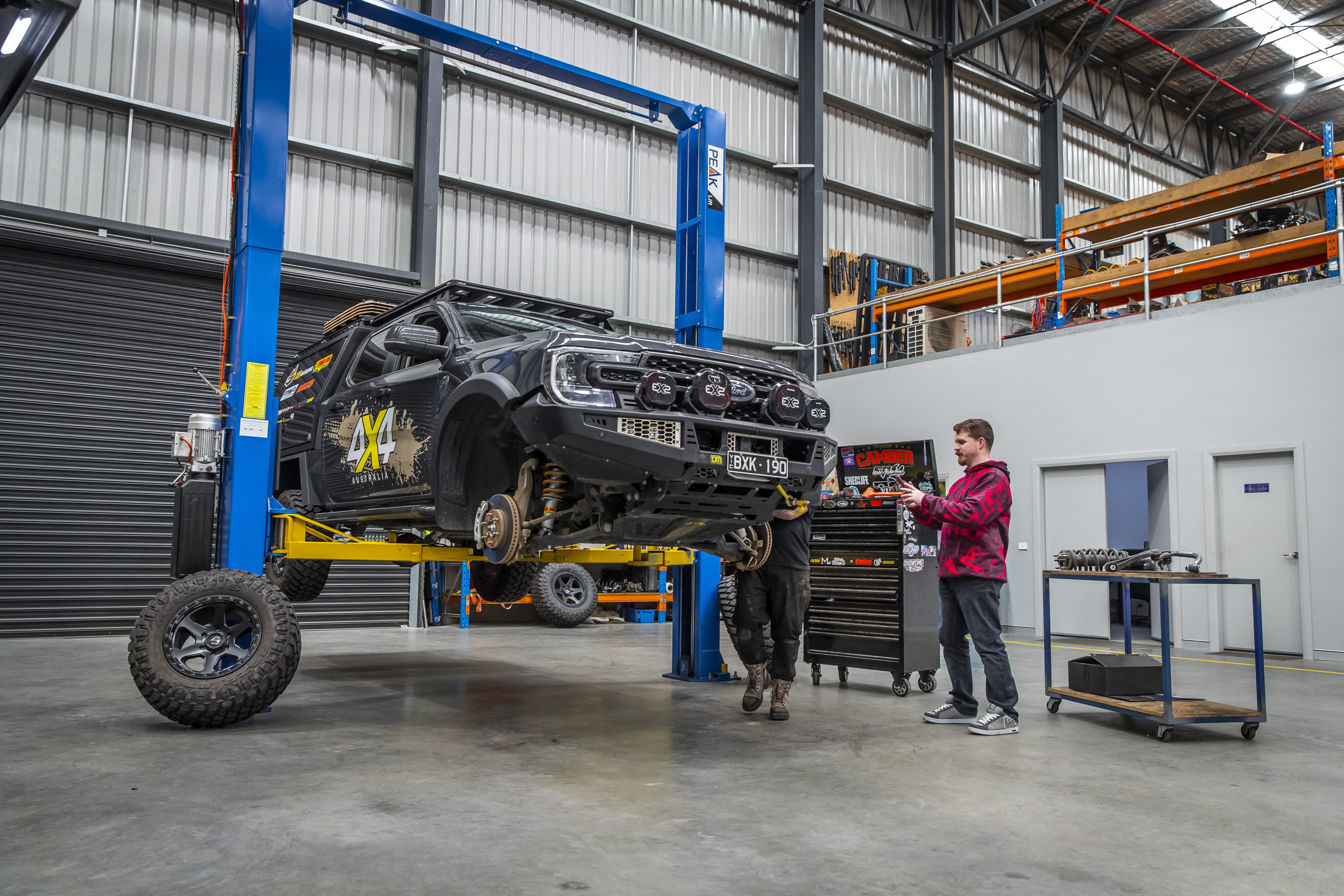
A set of 40mm bore Tough Dog Foam Cell shocks were also fitted to the rear-end where the OEM Ford shocks had been topping out over every bump when made to work with the taller leaf springs.
The longer shocks allow the springs to work to their full travel, and they better control the load and movement.
The full suspension installation was a straightforward job for the team at Tough Dog. This is after all what they do everyday… and have been doing for more than 35 years. Their experience showed once we got the Ranger back out on the road after a wheel alignment.

All the alignment settings were brought back to the factory specifications with a little bit of added caster to sharpen up the steering a tad.
The Ranger not only steers and rides better than it did when we drove in there, but it now copes better with bumps, and thanks to the added control of the new shock absorbers, the rear-end no longer tops out over every bump. It looks more like a proper touring 4x4 now as well, thanks to a lever ride height and plenty of ground clearance.
The drive back down the Hume Highway to Melbourne was a much more pleasant experience than the drive up to Sydney, as everything is now working in cohesion and the weight of the vehicle is much better controlled over humps and bumps. We’ll let you know how it performs off-road soon, so keep an eye out.
| Tough dog suspension for 2023 Ford Ranger | |
|---|---|
| Fully assembled 40mm bore/60mm outer casing foam cell strut | $601 each |
| Upper Control arms | $775 pair |
| Rear Shock 40mm bore/60mm outer casing foam cell | $190 each |
| Constant 500kg rear leaf spring | $420 each |
| Centre Bearing spacer kit | $40 |
| Greaseable pin | $90 |
| Greaseable Shackles | $105 |
| U-Bolts | $40 |
| Urethane Bush Kit | $205 |
| TOTAL | $4452 |



COMMENTS